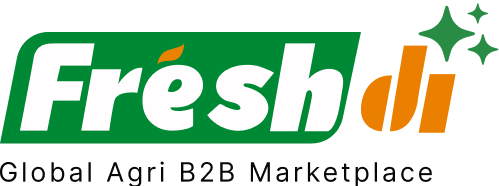Introduction – Current State of Play: The Sawdust Briquette Charcoal Sector in Vietnam
If you’re a business sourcing eco-friendly fuels, then Vietnam’s sawdust briquette charcoal market should be right at the top of your radar in 2025. Why? Because the game is changing fast.
From new tariffs and trade pacts to shifting global demand, Vietnam’s role as a key player in the biomass energy space is under pressure and opportunity at the same time. Recent developments—like the U.S. slapping a 46% tariff on wood-based products—could ripple across the supply chain, impacting everything from raw material costs to export volumes.
At the same time, Vietnam is leaning into its strengths: abundant raw materials, low production costs, and supportive government policies. But with all these moving parts, businesses need to be more informed and agile than ever.
Deep Dive – Market Movers: Recent Developments and Consequences
Let’s break it down—what’s really happening in Vietnam’s sawdust briquette charcoal scene?
1. Global Demand Is Fueling Growth
The world is hungry for clean energy. With traditional fuels falling out of favor, biomass solutions like sawdust briquette charcoal are stepping into the spotlight. In 2024 alone, Vietnam’s charcoal market hit 2.12 million tons. And it’s not stopping there—by 2034, projections suggest it could soar to 3.69 million tons, growing at a steady 5.7% CAGR.
Europe, Japan, and the Middle East are snapping up these briquettes, drawn by their lower emissions and high energy output.
2. Raw Material Advantage
Vietnam’s got a secret weapon—plentiful raw materials. Whether it’s sawdust from rubberwood and fruit trees or agricultural waste like coconut shells, the country is rich in biomass feedstock. Many charcoal factories are built close to forests or plantations, cutting down on logistics costs and increasing efficiency.
3. Supply Chain Challenges
But it’s not all smooth sailing. Producers are facing rising competition for raw materials, and production costs are inching up. Add in stricter environmental regulations, and the pressure is on to maintain consistent, high-quality output—especially in export-heavy markets where specs like ash content and burn time really matter.
4. Government Support & Trade Boosts
On the flip side, Vietnam’s government is playing the long game. With initiatives like tax incentives, land access, and technical training, the state is making it easier for charcoal producers to grow sustainably. The EU-Vietnam Free Trade Agreement (EVFTA) is another win, reducing tariffs and unlocking premium European markets for Vietnamese suppliers.
5. April 2025: Tariffs Shake Up the Market
Here’s the curveball—just this April, the U.S. imposed a hefty 46% tariff on Vietnamese wood-based exports. That’s expected to hit furniture exports hard, which means less sawdust and wood byproducts for charcoal and pellet producers. This could raise prices and tighten availability, especially in southern regions that serve the South Korean and Japanese markets.
Top 3 Verified Sawdust Briquette Charcoal Suppliers in Vietnam – Navigating Current Market Realities
Let’s talk suppliers. In a market moving this fast, it’s not enough to just find a supplier—you need one that’s adaptable, certified, and export-savvy. Based on current market conditions, user feedback, and verified data from platforms like Freshdi, here are the top performers in 2025:
1. GREENLIFE ASIA., JSC
- Strengths: Competitive pricing, large export volumes to Japan and Europe.
- Certifications: ISO and SGS verified.
- Why they’re on top: GREENLIFE adapts quickly to shifting global demand, and their supply chain is tightly managed for consistency.
2. GREENLINE JSC
- Strengths: High calorific value products, including hexagon and square briquettes.
- Certifications: FSC-certified wood sourcing.
- Why they stand out: Their briquettes burn hotter and longer, making them ideal for BBQ and industrial clients in Japan and the Middle East.
3. Local Exporter Cluster (South Vietnam Region)
- Strengths: Proximity to raw materials like rubberwood and coconut shells.
- Why include them: While not a single company, this cluster of smaller producers is gaining traction thanks to Freshdi’s verification system, which ranks them based on performance, consistency, and buyer reviews.
Dynamic Ranking Note: Platforms like Freshdi offer dynamic rankings—like “Suppliers of the Month/Quarter”—based on real-time performance, RFQ responses, export data, and buyer feedback. So, keep checking in for the latest top players.
Market Navigation – Strategic Responses to The Current Sawdust Briquette Charcoal Landscape in Vietnam
So, what should businesses be doing right now?
1. Reassess Raw Material Risk
With the U.S. tariff squeezing the wood supply, companies need to start evaluating their sourcing strategies. Consider working with suppliers who have diversified raw material sources or even explore alternative feedstocks like coconut shell-based briquettes.
2. Shift Focus to High-Demand Markets
Look towards Japan, the EU, and South Korea. These regions are less affected by the U.S. tariff situation and are increasing orders for eco-friendly fuels. Suppliers like GREENLIFE and GREENLINE are already tailored to serve these markets with the right certifications and product specs.
3. Strengthen Supplier Vetting
Not all suppliers are equipped to handle the rising demands of compliance and quality control. Use platforms like Freshdi to verify certifications, view real-time RFQ activity, and get feedback from other buyers. This minimizes your risk and saves time.
4. Consider Logistics and Lead Times
With potential bottlenecks in production, lead times may stretch. Plan ahead and build in buffer time for your shipments. Engage with suppliers who have local stockpiles or flexible production schedules.
5. Watch the South
Southern Vietnam is especially vulnerable due to its dependence on furniture production (now impacted by U.S. tariffs). If you’re sourcing from this region, keep a close eye on supply chain disruptions and consider diversifying your supplier base geographically.
Conclusion – Key Takeaways for Businesses in a Dynamic Market
Vietnam’s sawdust briquette charcoal market is in motion—and staying informed is the only way to stay ahead.
Here’s the quick recap:
- The market is growing fast, with strong global demand from eco-conscious regions.
- Supply chain advantages still make Vietnam a top sourcing spot—but rising costs and new tariffs pose real challenges.
- Verified suppliers like GREENLIFE ASIA., JSC and GREENLINE JSC are leading the way with quality, certifications, and agility.
- Strategic sourcing—backed by platforms like Freshdi—is your best defense and biggest opportunity in this dynamic environment.
Buyer Checklist – Are You Ready for 2025?
✅ Have you verified your supplier’s certifications and export history?
✅ Are you sourcing from regions in Vietnam less impacted by the U.S. tariffs?
✅ Have you adjusted your product specs to meet new market trends (e.g., low ash, high heat briquettes)?
✅ Are you using B2B platforms like Freshdi to monitor RFQ trends and supplier performance?
✅ Have you built flexibility into your logistics and inventory planning?
Future Outlook
Looking ahead, Vietnam’s sawdust briquette charcoal market is poised for continued growth. The global push for greener fuels isn’t slowing down, and Vietnam is uniquely positioned to lead—if it can navigate its current raw material challenges.
Expect increased consolidation among smaller producers, more international certifications, and greater use of digital platforms like Freshdi to streamline sourcing and supplier verification.
How Freshdi Empowers Buyers
- Real-Time Market Insights: Stay updated on RFQ spikes, price changes, and supplier trends.
- Verified Supplier Access: Work only with vetted suppliers reviewed by real buyers.
- Dynamic Rankings: Discover the top-performing suppliers of the month or quarter.
- Sourcing Intelligence: Get product recommendations tailored to your target markets (e.g., EU, Japan).
- Risk Mitigation: Avoid supply chain shocks by monitoring tariff impacts and regulatory changes.
References
- expertmarketresearch.com
- vuonglong.com.vn
- argusmedia.com
FAQs
1. What is sawdust briquette charcoal used for?
Sawdust briquette charcoal is commonly used for BBQ, heating, and industrial energy due to its high calorific value and low emissions.
2. Why is Vietnam a top exporter of sawdust briquette charcoal?
Vietnam has abundant raw materials, low production costs, and strong government support, making it ideal for producing and exporting charcoal.
3. How will the new U.S. tariffs affect the charcoal industry in Vietnam?
The tariffs may reduce wood exports, leading to shortages of sawdust byproducts used for charcoal, especially in southern Vietnam.
4. How can I verify the credibility of a charcoal supplier in Vietnam?
Use B2B sourcing platforms like Freshdi, which provide supplier certifications, export histories, and buyer reviews.
5. What’s the most in-demand charcoal type in 2025?
Hexagon and square-shaped sawdust briquettes with high heat output and low ash are leading the demand, especially in Japan and Europe.

